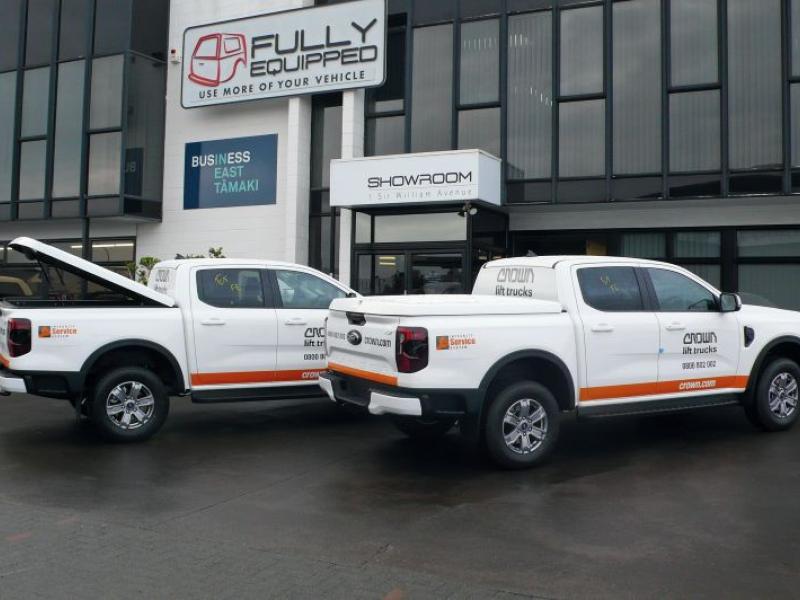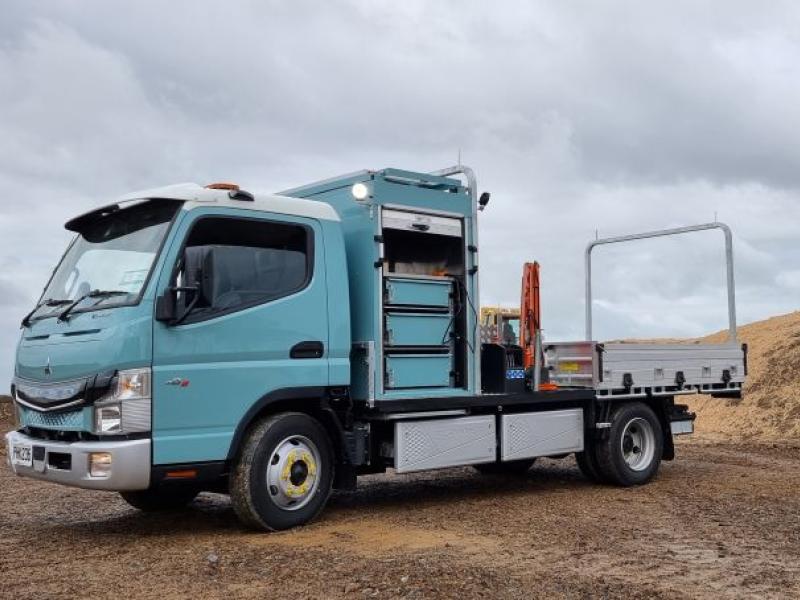By Lynnaire Johnston Is it my imagination or are there fewer cars on our rush hour roads? Not taking the car to work in order to cut fuel consumption may be an option for some, but it’s not feasible for most fleets. After all, if you didn’t need vehicles to conduct business, you wouldn’t have them, right? So, it follows that fleet managers need other solutions to help with continually mounting fuel bills. Now that the gap between the cost of running diesel-powered vehicles and petrol is narrowing, managers are looking at other alternatives. Ones that might not immediately spring to mind as being in any way remotely connected to the issue. But Custom Fleet’s general manager sales Peter Robb says his parent company, GE, is “promoting flexible working hours for staff where appropriate”. Of course, even this has its attendant problems because, for instance, there still needs to be someone to answer the phone during business hours. Other options include driver training, as driver behaviour can have a significant impact on fuel consumption (although Robb hasn’t noticed as much of an increase in companies going down this road as expected), and the installation of GPS systems which help companies look at their businesses holistically (see separate feature for how GPS systems can help fleet managers). Robb also reports an increase in the number of diesel vehicles being leased and managed, along with some companies opting for smaller vehicles than previously selected. He says, “’User-chooser’ drivers are moving out of large SUVs and into smaller ones, while drivers of eight cylinder cars are moving down to six, and so on.” He says smaller businesses are the first to feel the pinch of such large increases in fuel prices as it “hits them direct in the pocket.” But he says they are possibly able to adapt to fuel price increases more quickly than larger organisations, especially those which have bought or leased a new fleet recently and for whom the cost of selling or getting out of the lease may be prohibitive. Robb has a couple of practical tips for keeping fuel consumption down: keep your windows closed when driving over 80kph, only use your air-conditioning when necessary (and with your windows closed), drive smoothly and don’t completely fill the fuel tank as the extra weight burns more fuel. “Everyone is facing increased costs, the pressure on margins has never been higher, but we can’t control the price of oil. So, minimise usage, downsize to smaller vehicles if this is an option and look at other options like flexible working arrangements to help you reduce costs,” he advises. The price rises have been no picnic for oil companies either. Sharon Buckland, spokesperson for Chevron New Zealand, which markets the Caltex brand, says fuel prices are a hot topic of conversation with more small businesses investigating the fuel card option. She says, “There has been an increase in StarCard applications from small businesses. We believe that the price of fuel has encouraged many fleet managers to review their existing deals and look at alternative solutions for reducing operational costs. We have also seen an increase in activity from existing customers while existing StarCard users are asking more questions and reviewing their positions to ensure optimal energy usage.” Ben Unger, CEO of Cardlink has looked at the company’s figures for new cardholders, and found that June saw the largest number of cards issued of any month in the past two years. He says it is safe to say that people are definitely more interested in managing their fuel spend. Cardlink helps them do this in a number of ways. If offers members a card which can be used at all service stations (so no additional driving to find a certain fuel brand); it eliminates messy expense claims; and offers the ability to control the type of items purchased (eg fuel and oil only). As well, clients can elect to be able to analyse their fuel spend. Plus by being able to administer the system online, fuel spend can be monitored throughout the month, not merely at the end. Unger says fuel cards are also a staff retention tool, as many staff prefer a fuel card to an allowance or having to reclaim mileage. Car companies are feeling the pinch of fuel price rises, too. The country’s largest new vehicle distributor Toyota New Zealand is responding to mounting consumer concern surrounding fuel consumption, prices and carbon emissions by increasing its offering of diesel models. CEO Alistair Davis says Toyota is offering customers the choice of buying common rail diesel powered Corollas and RAV4s as an alternative way of lowering their carbon footprint and fuel consumption, while still also offering customers a range of hybrids and fuel efficient petrol vehicles. He says that with the escalating fuel price there has been a notable increase in the popularity of small cars from only 20 per cent of the market in 2000 to 35 per cent in 2008. Alistair Davis also says the diesel share of the market has grown to over 30 per cent – although these are mainly commercial vehicles. He predicts that with the introduction of new passenger models in the Toyota line-up, it is likely to break 35 per cent by year’s end. Figures produced by the Motor Industry Association show sales of new diesel-powered private passenger cars rose 10 percent in the first four months of this year compared with the same period last year. Sales of non-private cars for commercial use or fleets rose 44 percent. While that sounds a huge increase, the actual number – 1400 across both segments – is a drop in the bucket in terms of the overall new vehicle market of close to 34,000. In the same period, private diesel SUV sales were up 34 percent while fleet sales rose 25 percent. Sales of petrol-powered vehicles in both these segments meanwhile is on the decline. Light commercial diesel sales have also increased but to a much smaller extent. Chevron, too, has noticed an increase in interest from vehicle fleets looking at diesel as an option. Sharon Buckland says there has also been more interest in LPG. “However, the increase in LPG queries has not been as noticeable as with diesel. This is due to the higher barrier of entry for LPG caused by the need for car conversion and the greater availability of diesel cars on the market.” Waikato-based Switch 2 Gas has seen hits on its website quadruple in the past three months. Director Matt Hanna says the cost of conversion to LPG can be off-putting (it ranges from $3500 to $5000) but the economics depend on how quickly a company can recoup the cost. A line-haul truck travelling 800kms a day, for example, would save $50-70 a day in fuel, making the pay-back swift. Lower-mileage fleets would not see such great savings. Matt Hanna says his company is finding a strong market in dual fuel conversions – vehicles being converted from diesel to a combination of diesel and LPG. Not only does this increase a vehicle’s usable horsepower by 25 percent (because diesel only burns at 75 percent efficiency whereas LPG burns completely) but the emissions are cleaner. He admits LPG isn’t as much in the public eye as it once was because of the lack of Government policy support and the rising popularity of bio-diesel and ethanol as fuels. He reminds us though that infrastructure for LPG already exists in the form of 300 filling stations around the country, unlike that for bio fuel. In terms of hybrid vehicles, sales of Toyota’s hybrid Prius remain steady but are not increasing in any great numbers. Peter Robb believes this is because the Prius cannot match the load-carrying space of larger station wagons. They are best suited, he believes, for the likes of taxi companies and for urban driving where the Prius is most efficient. Looking to the future, global energy demand is expected to increase by 45 per cent over the next 20 years. The era of easy oil is over, and it is getting harder and more expensive to find the energy required to fuel the world’s economy. While conventional fossil fuels will continue to be a primary source of energy for decades, the world will still need renewable and alternative energy to meet growing demand. One option is the use of biofuels, which have the potential to play an important part in meeting New Zealand’s energy demands into the future. To meet surging demand, we need every available source of energy that can be produced in an economical and environmentally responsible manner. Chevron has partnered with leading sustainable land use and agricultural university, Lincoln, to research local biodiesel plant crops, in the hope of developing a viable feedstock industry here. Sharon Buckland says, “The availability of a sustainably grown biodiesel crop is important in securing a viable source of biodiesel. The New Zealand biodiesel market is currently focused on tallow (animal fat), which has seen price spikes, suffers from seasonal supply issues and has some challenging cold-weather performance issues.” She says the Lincoln University-based National Centre for Advanced Bio-Protection Technologies aims to identify alternative feedstocks, particularly those that use low-value plant species which can be grown on marginal land, thereby not competing with food crops or grazing. While the increase in fuel prices will affect bottom-lines countrywide, the future may not be as bleak as we may think. But, as Peter Robb says, people need to get smarter with their vehicle use. What will business in New Zealand be like when petrol costs $5 a litre? Now that’s a frightening prospect. 5 tips for reducing fuel consumption Supplied by Mechanics2U 1 Keep engines properly tuned Fixing a car that is noticeably out of tune or has failed an emissions test can improve its fuel mileage by an average of 4 percent, though results vary based on the kind of repair and how well it is done. Fixing a serious maintenance problem, such as a faulty oxygen sensor, can improve your mileage by as much as 40 percent. 2. Check & replace air filters regularly Replacing a clogged air filter can improve mileage by as much as 10 percent. Not only will replacing a dirty air filter save fuel, it will protect the engine. 3. Keep tyres properly inflated By keeping tyres inflated to the proper pressure fuel mileage can be increased by around 3.3 percent. Under-inflated tyres can lower fuel mileage by 0.4 percent for every one PSI drop in pressure of all four tyres. Properly inflated tyres are safer and last longer. 4. Use the recommended grade of motor oil Using the manufacturer’s recommended grade of motor oil can improve fuel mileage by 1-2 percent. For example, using 10W-30 motor oil in an engine designed to use 5W-30 can lower fuel mileage by 1-2 percent and using 5W-30 in an engine designed for 5W-20 can lower fuel mileage by 1-1.5 percent. Also, motor oil that says “Energy Conserving” on the API performance symbol contains friction-reducing additives. 5. Remove excess weight Avoid keeping unnecessary items in a vehicle, especially heavy ones. An extra 50 kgs could reduce kilometers-per-litre by up to 2 percent. The reduction is based on the percentage of extra weight relative to the vehicle’s weight and affects smaller vehicles more than larger ones.
Priced off the Roads?
Vehicle Fitout
Sunday, 03 August 2008
File Download:





